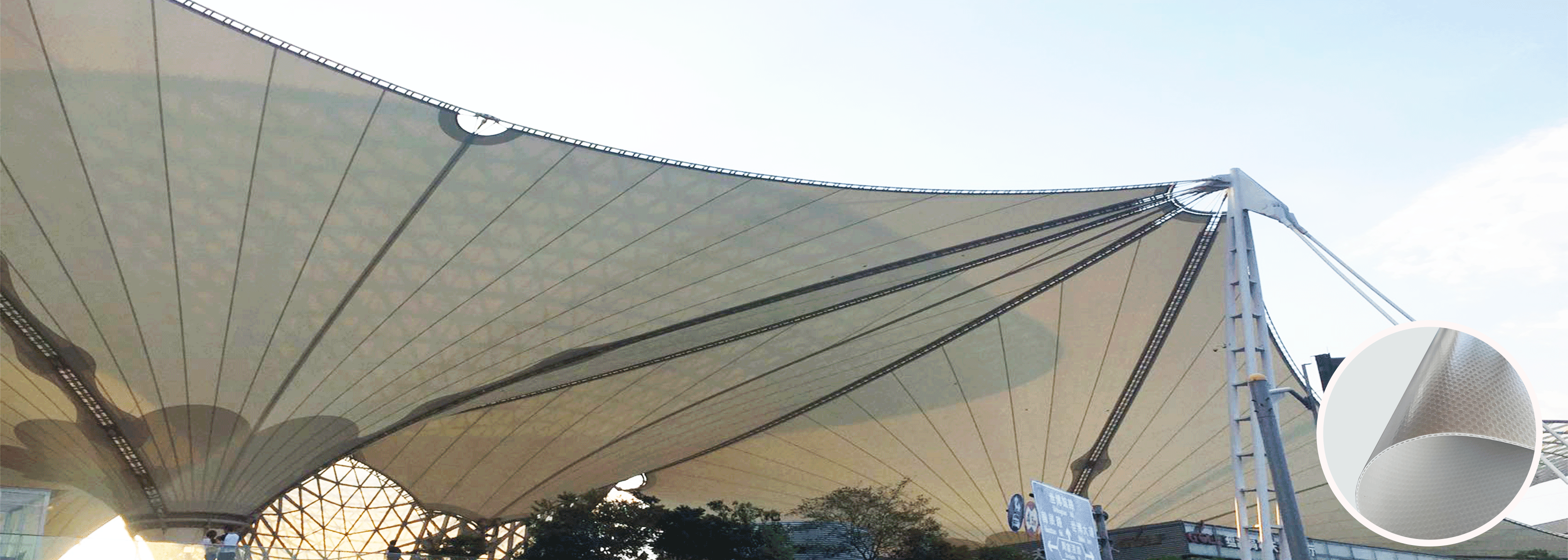A membrane structure refers to a type of construction that utilizes thin, flexible surfaces (membranes) to create roofs, facades, or other architectural elements. These structures are typically characterized by their lightweight, tensile nature, and ability to span large areas with minimal support. Membrane structures are often used in applications where traditional building materials would be impractical or too heavy.
Key Features of Membrane Structures:
1. Material:
- Membranes are usually made from synthetic materials such as PTFE-coated fiberglass, ETFE (ethylene tetrafluoroethylene), or PVC-coated polyester. These materials are chosen for their durability, flexibility, and resistance to environmental factors like UV radiation and weather.
2. Tensile Properties:
- Membrane structures rely on tension to maintain their shape and stability. The membrane is stretched over a framework or anchored to supporting structures, creating a taut surface.
3. Lightweight:
- Compared to traditional building materials like concrete or steel, membrane structures are extremely lightweight, reducing the need for heavy foundations and support systems.
4. Versatility:
- They can be designed in a wide variety of shapes and forms, from simple canopies to complex, curved geometries. This makes them ideal for creative and innovative architectural designs.
5. Transparency and Insulation:
- Some membrane materials, like ETFE, are transparent or translucent, allowing natural light to penetrate while providing insulation. This can reduce energy costs for lighting and climate control.
6. Durability:
- High-quality membrane materials are resistant to weathering, UV radiation, and fire, making them suitable for long-term use in various climates.
Types of Membrane Structures:
1. Tensile Structures:
- These are the most common type, where the membrane is stretched under tension to form a stable surface. Examples include canopies, stadium roofs, and shade sails.
2. Pneumatic Structures:
- These rely on air pressure to maintain their shape. The membrane is supported by a constant flow of air, creating a lightweight and flexible structure. Examples include inflatable domes and air-supported roofs.
3. Cable and Membrane Structures:
- These combine membranes with a network of cables to provide additional support and stability. The cables help distribute loads and create more complex shapes.
4. Frame-Supported Membranes:
- In these structures, the membrane is supported by a rigid frame, such as steel or aluminum. The frame provides the primary structural support, while the membrane acts as a covering.
Applications:
- Stadiums and Arenas: Large-span roofs for sports facilities.
- Airports and Transportation Hubs: Lightweight and durable roofing solutions.
- Exhibition Halls and Event Spaces: Temporary or permanent structures for large gatherings.
- Shade Structures: Canopies and sails for outdoor areas.
- **Greenhouses and Atriums**: Translucent membranes for natural lighting.
Advantages:
- Aesthetic Appeal: Unique and modern designs.
- Cost-Effective: Lower material and construction costs compared to traditional methods.
- Quick Installation: Faster to erect than conventional structures.
- Energy Efficiency: Natural lighting and insulation properties.
Disadvantages:
- Maintenance: Requires regular cleaning and inspection.
- Durability: While durable, membranes may have a shorter lifespan than traditional materials.
- Complex Engineering: Requires specialized design and engineering expertise.
Membrane structures are a popular choice in modern architecture due to their versatility, aesthetic appeal, and functional benefits.
